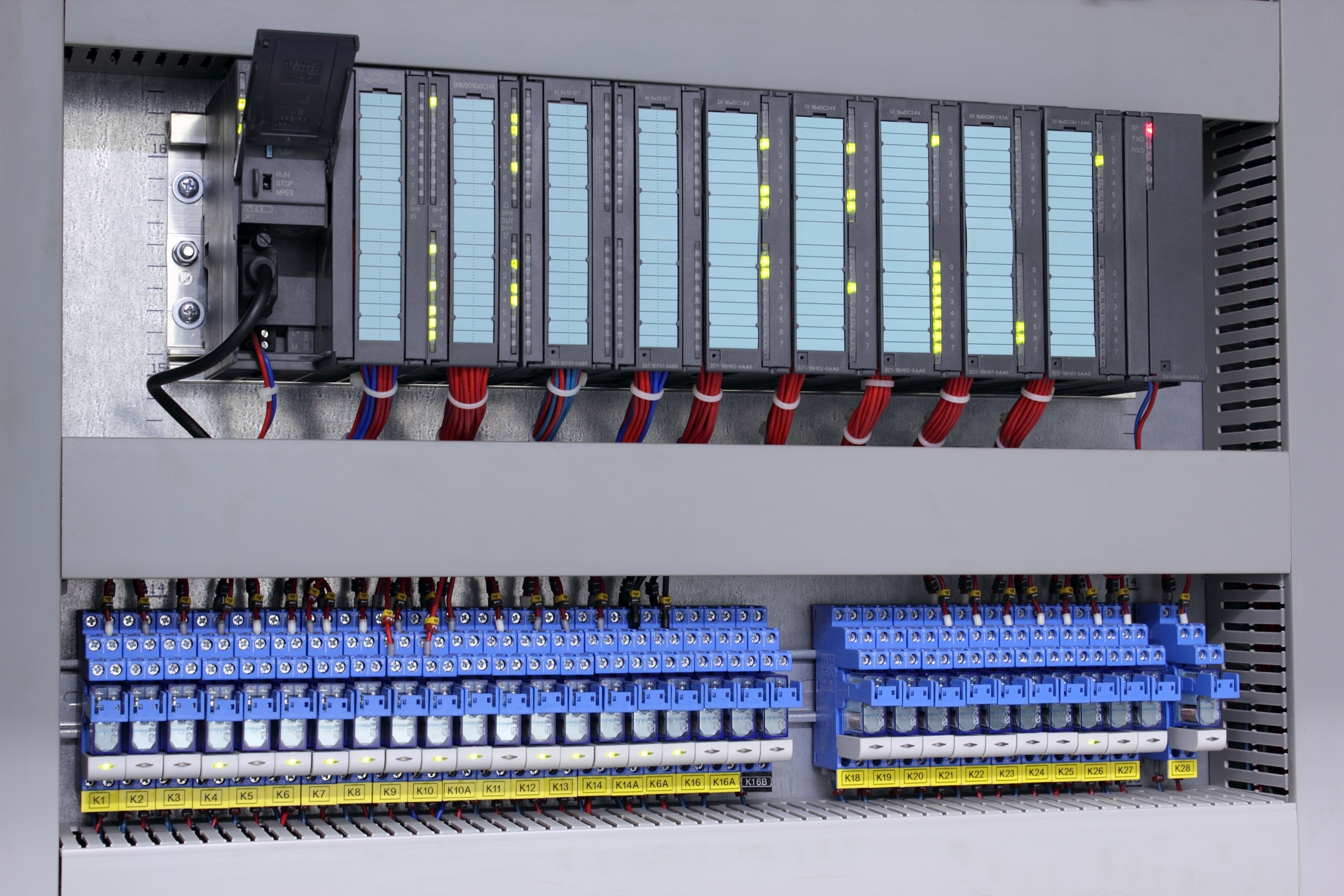
24VDC Controls vs 120VAC
Most of the projects we design rely on 24VDC controls. Occasionally our client requests a 120VAC installation. Understanding the pros and cons of each approach is useful.
24VDC Controls
The major advantage of 24VDC controls is safety. In Pendant panels, we physically separate the high voltage side (often a 480V feed comes into the panel) from the low voltage side. The PLC, I/O cards, routers, ethernet switches, and other controls components reside on the low voltage side. Manual motor protectors and VFDs used to operate the motors occupy a separate part of the control panel. This minimizes the exposure of operators and maintenance people to high voltages that can cause injury. Having the control side operate at 24V reduces that exposure even further compared to 120V controls.
On the potential downside, the possibility of electromagnetic interference (EMI) between a 480V feed and 24V controls means that the field wiring must be separated into different conduits. With 120V controls, the impact of EMI is lower. EMI-induced voltage in a low voltage circuit can be high enough to produce a false signal, where that same EMI-induced voltage may not affect the higher (120V) voltage circuit.
Because the conduit must be separated, the field wiring installation costs for this part of the installation are typically higher.
A key takeaway for you is to specify your preference when you request a quote from Pendant. Many of our clients (mechanical systems integrators) include their own control specifications or the control specs for the end client in the RFQ package. Pendant thoroughly reviews the specs to be sure that we quote and build a compliant system for you. Nobody likes a change order, right?
Send me a 24V quote, no wait, 120V, awww just figure it out for me, please